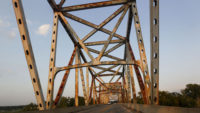While the big impacts of the coronavirus on construction and its broader client base may not be known for weeks, even years, the industry is responding as nimbly as it can to the effects already being felt. These effects include shutdowns of construction sites in Boston, ramped up AEC virtual office links, firms coping with infected employees, interrupted in-process business deals and critical networking events delayed or cancelled.
[For ENR’s latest coverage of the impacts of the COVID-19 pandemic, click here]
Brian Turmail, Associated General Contractors spokesman says, “We’re in uncharted territory here, for the AGC and the rest of the industry. Things are happening fast and furious.” Global design firm Mott MacDonald Group Managing Director James Harris has seen trouble in numerous markets in his career but never anything like the new coronavirus, which now occupies about half his time. He expects company efficiency to suffer and is preparing for a slowdown in client payments.
The known work impacts and planning uncertainties are creating an economic outlook for the industry that is changing daily and “cloudy at best,” says Richard Branch, chief economist at Dodge Data & Analytics (see related story p. 32). While construction equipment and materials are finally being shipped from China, which had been under a partial lockdown, there are now fewer sites and workers using them as the pandemic spreads globally.
A survey by Zweig Group of 77 architecture, engineering and construction firms released March 17 found that 55% said they had no projects canceled; 3% said they had cancelled or delayed projects; 12% were experiencing client-related delays; and 32% were still weighing impacts.
With air travel curbed by U.S. presidential fiat and personal precautions, Delta and United Airlines have announced capacity reductions and plan to cut capital investment by $2.5 billion and at least $2 billion, respectively. The former may be exploring new financing options for its $1.4-billion JFK airport terminal project, with its resources strained, according to sources.
The possibility of work arising from the crisis, such as the U.S. Army Corps of Engineers retrofitting hospitals to handle quarantined patients, or new facilities to manufacture vaccines, appears weeks away, if not longer.
Some cities, including San Francisco, which is faced with a housing shortage, continue to allow construction work even though they are on lockdown. But Boston announced March 16 it would close all but emergency jobsites. Mayor Marty Walsh (D), a former union laborer and head of the Building and Construction Trades Council, estimated the shutdown order could throw “tens of thousands” of tradespeople out of work. He appealed to city construction employers to “do the right thing” and lay off workers—presumably so they can collect unemployment – and not fire them.
The Boston Planning and Development Agency said the shutdown would affect some 21.4 million sq ft of new or renovated development. “It’s massive, massive,” said Walsh. “It is a difficult decision to make. Construction is at the core of our economy here in Boston.” The city will revisit the shutdown in two weeks, he added.
Pennsylvania was the first state to suspend road and bridge construction in response to the growing COVID-19 crisis, as agencies ordered contractors to halt work on current projects for two weeks as of midnight March 17. Robert Latham, executive vice president of Associated Pennsylvania Constructors, credited the action as a safety precaution but considered the move drastic. He noted the Massachusetts Dept. of Transportation remains operational, even though Boston has halted vertical construction projects. “We know PennDOT appreciates that the shutdown order has placed a $2.2-billion industry on hold,” Latham says, adding that “effects on workers and the unemployment compensation system should be considered as well.”
AGC CEO Stephen E. Sandherr cautioned that shutdowns “have the potential to bankrupt many construction firms with contractual obligations to stay on schedule or risk incurring significant financial penalties.” The unfolding situation has unleashed a barrage of communications from industry legal experts on protective measures for firms and has elevated “force majeure” to known-quantity status.
Federal protective measures still are unfolding and unclear, with Vice President Mike Pence at a March 17 White House press conference calling on construction companies to donate inventories of respirator masks to health care facilities. The statement comes as Congress is considering legislation that would include additional N95 liability protections for companies that manufacture and sell masks.
Meanwhile Senate Majority Leader Mitch McConnell (R-Ky) at ENR press time was laying plans to draft another bill to deal with the coronavirus pandemic and its economic impacts. He told reporters on March 17 that the envisioned new bill—a third since early March—would be substantially bigger than the two that preceded it. The first, signed into law on March 6, totaled $8.3 billion. A new version passed the House on March 14, with “technical corrections” on March 16. The Senate approved the measure on March 18, by a 90-8 vote.
AGC had objected to a provision in the March 14 bill, to require companies with fewer than 500 workers to “front” the costs of medical and family leave. AGC is concerned with provisions to offset the costs of sick leaves by providing employers with a tax credit that it says could take weeks to process. The contractor group says that instead, the federal government should pay for the medical and family leave.
Senate Minority Leader Chuck Schumer (D-N.Y.) proposed a package of at least $750 billion aimed at hospitals and medical treatment, unemployment insurance, Medicaid and “loan forbearance and aid” to small businesses, as well as childcare and senior citizens.
Meanwhile, firms are doing what they can to maintain operations. Humphreys & Partners Architects in Dallas, like many firms, says it will conduct all meetings via the internet for 30 days, limit air travel and encourage work-from-home arrangements. “We are currently evaluating all options,” says CEO Mark Humphreys.
Story updated on March 18 with Senate vote on coronavirus-response bill.











Post a comment to this article
Report Abusive Comment